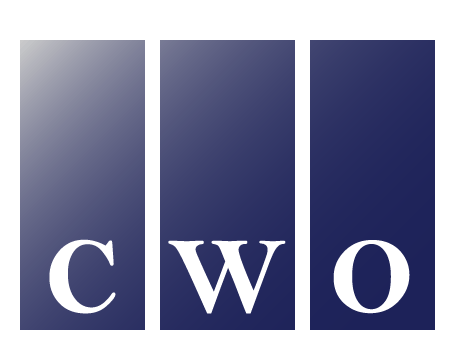
Do you know the value of your business today? If you haven’t had a professional business evaluation recently, then you likely don’t know the correct answer. It’s crucial as part of your business succession plan that you have an accurate, current valuation of your business. Current is key. Because various factors, such as the economic climate and industry competition, can change over time and impact your business’s value, you can’t rely on an outdated valuation.
A Forbes article noted that two-thirds of business owners in a survey said a top goal in the transition of their business was to get full value for their business to fund their retirement or other business interests, yet less than 40% had a formal valuation conducted in the last three years. [1]
For those with a retirement date set or who are considering retirement within the next 10 years, it’s important to obtain a business valuation so you know what your company is worth today as you implement risk management strategies, and begin to develop and later execute your succession plan.
What is Business Valuation?
Business valuation requires applying standard valuation methods as well as taking into account the circumstances of different buyers. While there are no fixed rules or formulas, there are common practices, and the value of your business will always be what you are willing to sell it for in addition to what the potential buyer is willing to pay.
There are different methods used by industry practitioners to place a value on your company. While you can calculate your business’s value yourself, we recommend working with a professional who is experienced in business valuation so that you get the most accurate and complete picture of your company’s worth.
Here’s a look at four common valuation methods.
Valuation Method #1: Comparable Company Analysis
One common valuation method is to evaluate a comparable company that was recently sold or other similar businesses that have a known acquisition valuation. You’ll find a multitude of resources at annual industry conferences or other events to help discover the selling price of similar companies within your industry.
A common problem with this method is that it often leads to an uneven comparison between companies. Keep in mind that you need to be realistic when comparing your company to others; you can’t compare your small local business for instance with a fortune 500 counterpart.
Valuation Method #2: Asset-Based Business Valuation
This approach considers your business’s total net asset value, minus the value of its liabilities. There are two ways to approach this method:
i. Going Concern
For a business that does not have plans to sell their assets in the near future, the going-concern approach should be used when developing an asset-based valuation. The formula involved uses your business’s current total equity, or assets minus liabilities.[2]
ii. Liquidation Value
This approach assumes that your business is coming to an end and the assets are going to be liquidated. The value of your company’s assets will likely be lower than usual, considering the liquidation value is often much lower than fair market value.
A bit of urgency is utilized with the liquidation value method that other valuation methods may not take into account.
Valuation Method #3: DCF (Discounted Cash Flow) Analysis
Here, an analyst will forecast the cash flow of the business and discount it at the firm’s Weighted Average Cost of Capital (WACC).[3] A DCF analysis is performed by creating a financial model and requires an extensive amount of detail. Of the three approaches, this method requires the most assumptions and often produces the highest value. The effort required to prepare a DCF model often results in the most accurate valuation.
For larger companies, the DCF value is commonly an over-arching analysis, in which different business units are presented individually and ultimately added together.
Valuation Method #4: Multiples Analysis
In this approach, multiples evaluate one financial metric as a ratio of another in order to compare companies more easily.[4] The two main categories of multiples are equity multiples (e.g., price-to-earnings ratio or price-earnings to growth (PEG) ratio) and enterprise value multiples (e.g., enterprise value to sales ratio or enterprise value to EBITDA).
Just as in the asset-based valuation, this valuation process also has two main methods:
i. Company Comparison
The Comparable Company Analysis, or “comps,” compares similar public companies in size, industry, and market value that are assumed to have comparable financial and qualitative characteristics.
ii. M&A Activity
The Precedent Transaction Analysis looks at past mergers and acquisitions of companies in the same industry to estimate what a company is worth.
The multiples analysis can be fairly simple to use and understand, however, it requires that you find similar companies so that you can calculate comparable multiples.
iii. Incorporate a Variety of Methods
The value of your business ultimately will involve what you are willing to sell it for combined with what the current demand for a business similar to yours is worth in the current market. As you begin this process, keep in mind that there may not be just one solution. Consider using a combination of business valuation methods in order to set a selling price. By working with a financial professional that specializes in business valuation, you’ll be much more likely to sell your business for the best price.
The team at C.W. O’Conner Wealth Advisors works with small business owners to prepare for retirement. We provide business advisory and consulting services in a variety of areas, including ownership transactions, buy/sell agreements, and liquidity events. Call us directly at 770-368-9919 or email Cliff at [email protected] or Kevin at [email protected] to learn more.
[1] Forbes, “Study Shows Why Many Businesses Can’t Sell When They Want To,” Feb. 5, 2017
[2] https://www.fundera.com/blog/business-valuation-methods
[3] https://corporatefinanceinstitute.com/resources/knowledge/modeling/valuation-modeling-in-excel/
[4] https://corporatefinanceinstitute.com/resources/knowledge/valuation/types-of-valuation-multiples/
Download our 2025 Financial Planning Guide







